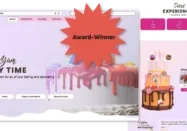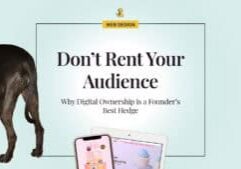What is an empathy map, and why do we care?
Share this article.
In this episode, Rhonda Negard joins Jason and Bridget again to talk about how an empathy map helps with your user experience (UX). You’ll want to take notes during this show! Thank you for being a preroll sponsor, ServerPress! ServerPress is the maker of DesktopServer, WPSiteSync, and so much more! Check them out at serverpress.com. Check Out Bridget’s New Book “Keys To Being Social: Being Real In A Virtual World.” Kindle Paperback Are You Looking For Brand Awareness? You could be a show sponsor. Especially now, let people know you’re still in business and supporting your products. Supporting podcasts is a great way to repurpose your in-person conference budget. What Is Empathy? Rhonda points out the difference between sympathy and empathy. But also the fact that it is easy to say we are empathetic toward our clients, until we’re not. Empathy is understanding your user’s experience. Know the difference between what people say and what they do. “UX is about understanding who you’re serving.” Rhonda Negard Sometimes we need self-awareness to understand how we express (which is compassion) or understand our empathy. Do The Research Doing the research in empathy may take different forms. But don’t let your knowledge stop you from understanding your mix of clients. You should have a good mix of big, medium, and small clients. And remember that you are building a community of personas, not just one. “Sometimes we get burdened with the curse of knowledge.” Rhonda Negard “How do I get people that not me to buy my thing?” Jason Tucker Facilitate This Discussion With Your Client The empathy mapping is best when it is a facilitated activity. Brand strategists, good ones, are intuitive like coaches. “That intuition — a lot of designers have that — it happens naturally through conversation. …Your facilitator and your partner can translate [and see the pattern].” Rhonda Negard The quadrants aren’t linear. You can write notes wherever they feel natural and move them around later. “There is something freeing about not being in a bulleted list.” Rhonda Negard Ask questions. For example, many entrepreneurs used to be employees. That network is useful but maybe your role changes. When you have a network, your role may change depending upon if you were an employee and now are an entrepreneur. Digging in with a consultant like Rhonda helps break through these.
In this episode, Rhonda Negard joins Jason and Bridget again to talk about how an empathy map helps with your user experience (UX). You’ll want to take notes during this show!
Thank you for being a preroll sponsor, ServerPress! ServerPress is the maker of DesktopServer, WPSiteSync, and so much more! Check them out at serverpress.com.
Check Out Bridget’s New Book “Keys To Being Social: Being Real In A Virtual World.”
Are You Looking For Brand Awareness?
You could be a show sponsor. Especially now, let people know you’re still in business and supporting your products. Supporting podcasts is a great way to repurpose your in-person conference budget.
What Is Empathy?
Rhonda points out the difference between sympathy and empathy. But also the fact that it is easy to say we are empathetic toward our clients, until we’re not.
Empathy is understanding your user’s experience. Know the difference between what people say and what they do.
“UX is about understanding who you’re serving.”
Rhonda Negard
Sometimes we need self-awareness to understand how we express (which is compassion) or understand our empathy.
Do The Research
Doing the research in empathy may take different forms. But don’t let your knowledge stop you from understanding your mix of clients. You should have a good mix of big, medium, and small clients. And remember that you are building a community of personas, not just one.
“Sometimes we get burdened with the curse of knowledge.”
Rhonda Negard
“How do I get people that not me to buy my thing?”
Jason Tucker
Facilitate This Discussion With Your Client
The empathy mapping is best when it is a facilitated activity. Brand strategists, good ones, are intuitive like coaches.
“That intuition — a lot of designers have that — it happens naturally through conversation. …Your facilitator and your partner can translate [and see the pattern].”
Rhonda Negard
The quadrants aren’t linear. You can write notes wherever they feel natural and move them around later.
“There is something freeing about not being in a bulleted list.”
Rhonda Negard
Ask questions. For example, many entrepreneurs used to be employees. That network is useful but maybe your role changes. When you have a network, your role may change depending upon if you were an employee and now are an entrepreneur. Digging in with a consultant like Rhonda helps break through these.








